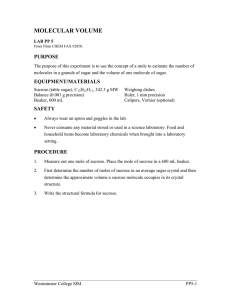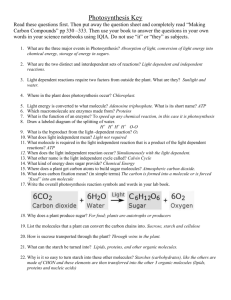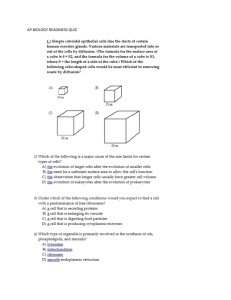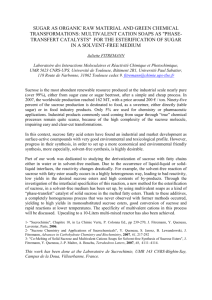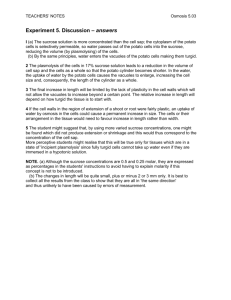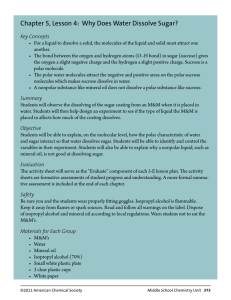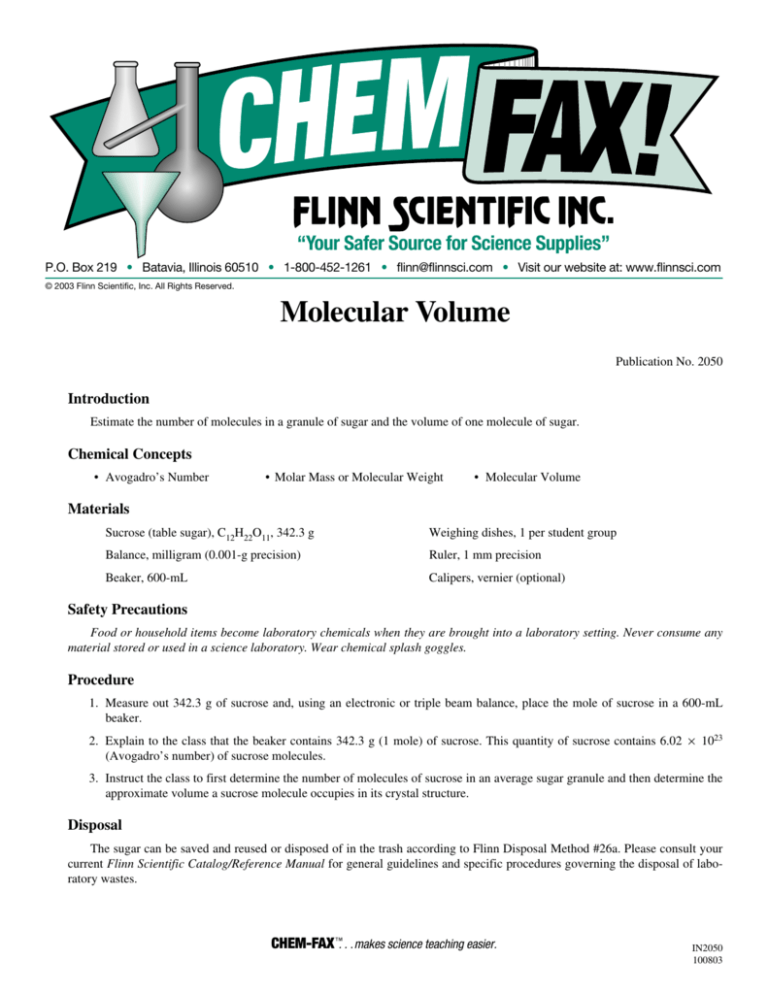
“Your Safer Source for Science Supplies”
P.O. Box 219 • Batavia, Illinois 60510 • 1-800-452-1261 • flinn@flinnsci.com • Visit our website at: www.flinnsci.com
© 2003 Flinn Scientific, Inc. All Rights Reserved.
Molecular Volume
Publication No. 2050
Introduction
Estimate the number of molecules in a granule of sugar and the volume of one molecule of sugar.
Chemical Concepts
• Avogadro’s Number
• Molar Mass or Molecular Weight
• Molecular Volume
Materials
Sucrose (table sugar), C12H22O11, 342.3 g
Weighing dishes, 1 per student group
Balance, milligram (0.001-g precision)
Ruler, 1 mm precision
Beaker, 600-mL
Calipers, vernier (optional)
Safety Precautions
Food or household items become laboratory chemicals when they are brought into a laboratory setting. Never consume any
material stored or used in a science laboratory. Wear chemical splash goggles.
Procedure
1. Measure out 342.3 g of sucrose and, using an electronic or triple beam balance, place the mole of sucrose in a 600-mL
beaker.
2. Explain to the class that the beaker contains 342.3 g (1 mole) of sucrose. This quantity of sucrose contains 6.02 × 1023
(Avogadro’s number) of sucrose molecules.
3. Instruct the class to first determine the number of molecules of sucrose in an average sugar granule and then determine the
approximate volume a sucrose molecule occupies in its crystal structure.
Disposal
The sugar can be saved and reused or disposed of in the trash according to Flinn Disposal Method #26a. Please consult your
current Flinn Scientific Catalog/Reference Manual for general guidelines and specific procedures governing the disposal of laboratory wastes.
CHEM-FAX. . .makes science teaching easier.
IN2050
100803
Tips
• For best results, use large sucrose crystals such as those available from Flinn Scientific. Large crystals are easier to count
and their dimensions are easier to measure.
• If a milligram balance is not available, a centigram balance may be used, but the results will be less precise.
Discussion
Determine the number of molecules
1. Count out 100 granules of sugar into a tared weighing dish.
2. Determine the mass of 100 granules to the nearest milligram (0.001 g).
3. Divide the mass by 100 to determine the average mass of one (1) granule of sugar.
4. Divide the average mass of a single sugar granule by 342.3 g to determine the number of moles in one granule.
5. Multiply the number of moles by Avogadro’s number, 6.02 × 1023, to determine the number of molecules in the granule
of sugar.
Sample calculation:
0.361 g
1 mole
6.02 × 1023 molecules
————— • ——— • —————————— = 6.35 × 1018 molecules/granule
100 granules
342.3 g
1 mole
Determine the volume of a sucrose granule
1. Select three representative granules of sucrose and measure the crystal size to the nearest 0.1 mm. (Estimate the tenth’s
place.)
2. Calculate the volume of a crystal in mm3, then convert to Å3 (1 × 10–10 m = 1 × 10–7 mm = 1 Å) by dividing by
1 × 10–21 mm3/Å3.
Sample calculation:
1 Å3
2.0 mm × 1.3 mm × 1.1 mm = 2.9 mm3 • ———————
= 2.9 × 1021 Å3
1 × 10–21 mm3
3. Calculate the approximate volume that a sucrose molecule occupies in its crystal structure
by dividing crystal volume by number of molecules in the crystal.
CH2 OH H
O
HO
HO
4. Is this reasonable? Yes, a sucrose molecule is approximately 7 atoms long by 7 atoms tall
by 7 atoms wide (see Figure 1).
If a carbon–hydrogen or oxygen–hydrogen bond is about an angstrom long and a carbon–carbon or carbon–oxygen bond is about 1.5 angstroms long, the size of the molecule
could be a cube about 7–8 Å per side.
H
H
OH
Sample Calculation:
2.9 × 1021 Å3
—————————–
= 450 Å3/molecule
6.35 × 1018 molecules
H
H
H O OH
H
CH2 OH
OH
Acknowledgment
OH
O
H
Figure 1. Sucrose Molecule
Special thanks to John P. Thole, St. Ignatius College Prep, Chicago, IL for sharing this activity with Flinn Scientific.
Materials for Molecular Volume are available from Flinn Scientific, Inc.
Catalog No.
S0134
AP1278
OB1061
OB2050
Description
Sucrose, reagent, 500 g
Weighing dishes, disposable,
31/16 sq.
Ohaus Precision Standard Series
Electronic Balance, capacity 120 g,
readability 0.001 g
Ohaus Analytical Balance,
capacity 122 g,readability 0.0001 g
Price/Each
Consult Your
Current Flinn
Catalog/Reference
Manual.
–2–
© 2003 Flinn Scientific, Inc. All Rights Reserved.
IN2050

